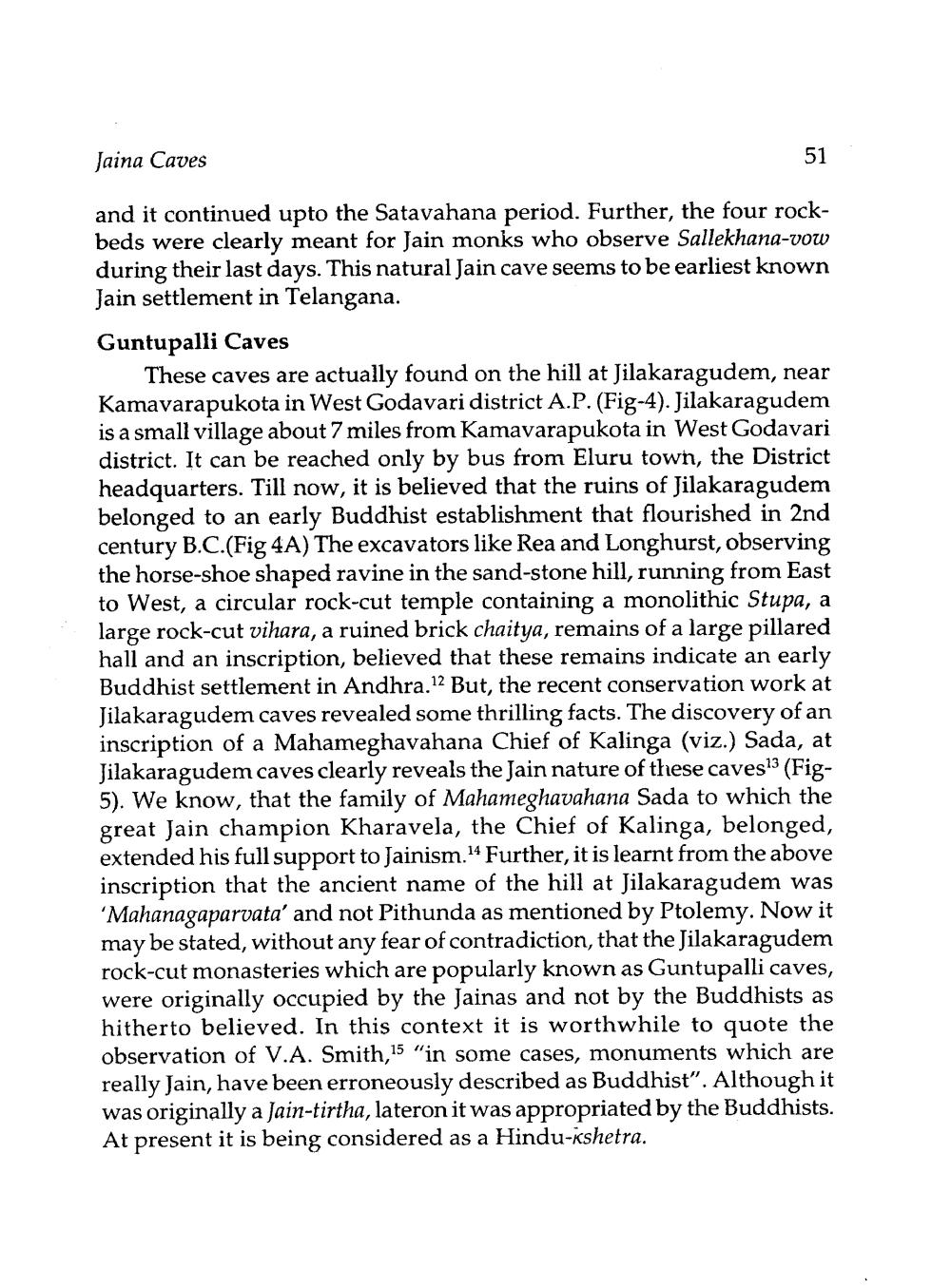________________
51
Jaina Caves
and it continued upto the Satavahana period. Further, the four rockbeds were clearly meant for Jain monks who observe Sallekhana-vow during their last days. This natural Jain cave seems to be earliest known Jain settlement in Telangana.
Guntupalli Caves
These caves are actually found on the hill at Jilakaragudem, near Kamavarapukota in West Godavari district A.P. (Fig-4). Jilakaragudem is a small village about 7 miles from Kamavarapukota in West Godavari district. It can be reached only by bus from Eluru town, the District headquarters. Till now, it is believed that the ruins of Jilakaragudem belonged to an early Buddhist establishment that flourished in 2nd century B.C.(Fig 4A) The excavators like Rea and Longhurst, observing the horse-shoe shaped ravine in the sand-stone hill, running from East to West, a circular rock-cut temple containing a monolithic Stupa, a large rock-cut vihara, a ruined brick chaitya, remains of a large pillared hall and an inscription, believed that these remains indicate an early Buddhist settlement in Andhra.12 But, the recent conservation work at Jilakaragudem caves revealed some thrilling facts. The discovery of an inscription of a Mahameghavahana Chief of Kalinga (viz.) Sada, at Jilakaragudem caves clearly reveals the Jain nature of these caves13 (Fig5). We know, that the family of Mahameghavahana Sada to which the great Jain champion Kharavela, the Chief of Kalinga, belonged, extended his full support to Jainism.14 Further, it is learnt from the above inscription that the ancient name of the hill at Jilakaragudem was 'Mahanagaparvata' and not Pithunda as mentioned by Ptolemy. Now it may be stated, without any fear of contradiction, that the Jilakaragudem rock-cut monasteries which are popularly known as Guntupalli caves, were originally occupied by the Jainas and not by the Buddhists as hitherto believed. In this context it is worthwhile to quote the observation of V.A. Smith,15 "in some cases, monuments which are really Jain, have been erroneously described as Buddhist". Although it was originally a Jain-tirtha, lateron it was appropriated by the Buddhists. At present it is being considered as a Hindu-kshetra.




